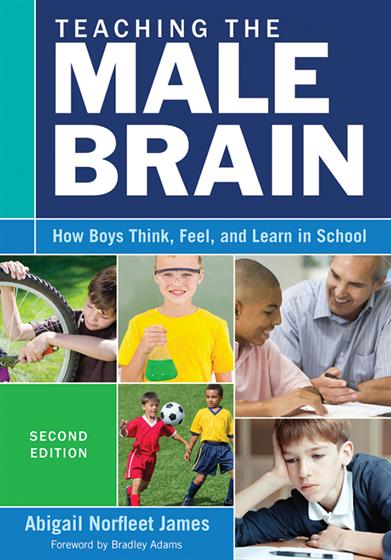Foreword
Acknowledgments
About the Author
Introduction
Substantiating Research
How the Book Is Structured
Learning Objectives
Part I. Sex and Gender Differences in the Classroom
Chapter 1. Brain Basics
Are Brains Gendered?
Anatomy of the Brain
Sex Differences in Brain Function
Cognitive Skills
Chapter 2. Sensory Differences
Vision
Hearing
Touch
Learning Modalities
Sensory Differences and Learning
Chapter 3. Physical Differences
Activity Levels
Gross Motor Development Versus Fine Motor Development
Targeting
Handedness and Dexterity
Growth Patterns
Physical Differences and Learning
Chapter 4. Cognitive Differences
Verbal and Language Skills
Practice the Skills Necessary for the SAT, ACT, NAEP, and Other Standardized Tests
Spatial Abilities
Learning Modalities
Strategy Development
Cognitive Differences and Learning
Part II. Societal and Biological Influences
Chapter 5. ADHD and Learning Disabilities
Attention—ADHD
Medication
The “At Risk” Student
Sleep
Attentional and Learning Problems
Chapter 6. Social and Emotional Differences
The Brain and Emotions
Emotional Vocabulary
Aggression and Bullying
Competition and Cooperation
Puberty
Alcohol and Drugs
Social Influence on School
School and Masculinity
Learning Applications
Emotions and Learning
Chapter 7. Students With Other Risks
Teachers
Culture
Adults
Boys in Foster Care
Boys With Cultural, Linguistic, or Socioeconomic Differences and School
Part III. Strategies and Resources for Teaching the Male Brain
Chapter 8. Classroom Management Strategies
Home Influence
Discipline
Self-Control
Technology
Classroom Management and Learning
Chapter 9. Content-Specific Suggestions
English/Language Arts
Mathematics
History/Social Studies
Science
Foreign Languages
Fine Arts, Music, and Drama
Computer Skills
Individual Disciplines and Learning
Chapter 10. Gendered Education: Teaching Boys and Girls Together
Boys and Girls as Learners
Sex and Gender Differences in the Classroom
Gendered Education and Learning
Chapter 11. Effective Teaching
Differentiated Instruction
Multiple Intelligences
Learning Modalities
Unit Design
Empowering Boys as Learners
Test-Taking Strategies
Final Words
Chapter 12. Resources and Other Helps
Books of Interest
Rubrics
Learning Style Assessments
Resources
Books for Boys Ages 6–9
Books for Boys Ages 9–13
Books for Boys Ages 13–18
Graphic Novels
References
Index



